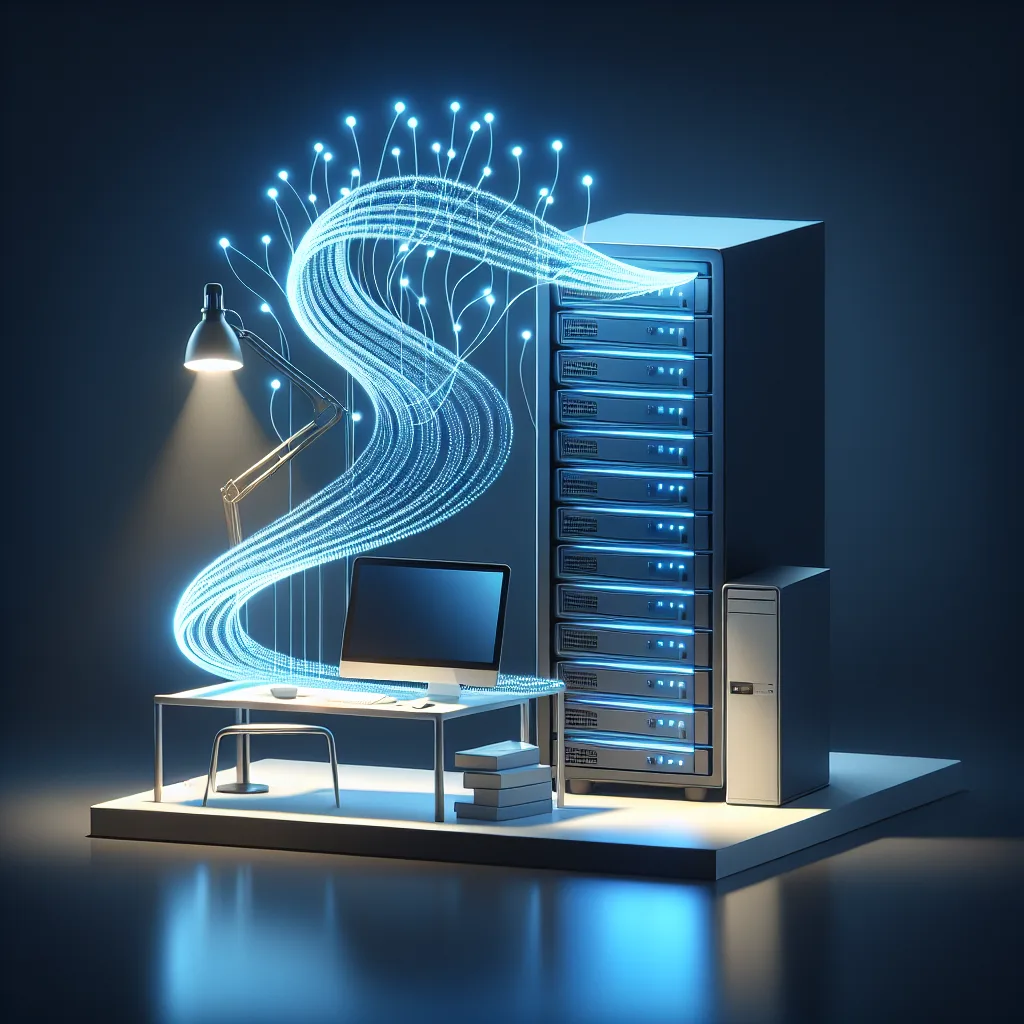A friendly guide to understanding file server best practices and keeping your data safe from corruption when working over a network.
I remember the moment I decided to set up my first proper home server. It felt like a huge step up from just using a bunch of external hard drives. The idea of having one central, protected place for all my important files was amazing. But then a little bit of fear crept in. If I’m working directly off the server, what’s stopping a random glitch from scrambling my files? Moving from local storage to a network setup is a new world, and it’s totally normal to worry about keeping your data safe. It’s a question I’ve spent a lot of time on, and it really comes down to a few core file server best practices.
Let’s be honest, the thought of file corruption is terrifying. You hit save on a project you’ve poured hours into, only to find it’s an unreadable mess later. The good news is, if you’ve built your server with the right components, you’ve already won half the battle.
Your First Line of Defense: ZFS and ECC RAM
If you’re serious about protecting your data on your server, you’ll hear two acronyms over and over: ZFS and ECC. Think of them as the dynamic duo of data integrity.
- ZFS (Zettabyte File System): This isn’t your average file system. ZFS is incredibly smart. Its superpower is something called “checksumming.” In simple terms, when you store a file, ZFS creates a unique signature (a checksum) for it. When you access the file later, it checks the signature again. If it doesn’t match, ZFS knows the data has been silently corrupted (a phenomenon known as “bit rot”) and can often fix it automatically using redundant data. It’s a foundational part of modern file server best practices. You can learn more about its powerful features on the official OpenZFS project page.
- ECC (Error-Correcting Code) RAM: Standard computer memory can, on rare occasions, have tiny errors. A bit can flip from a 1 to a 0, or vice versa. Usually, it’s harmless. But if that bit is part of a file you’re saving, it introduces corruption. ECC RAM has an extra chip that acts as a full-time fact-checker, detecting and correcting these single-bit memory errors on the fly before they can cause any damage.
If your server is running ZFS and has ECC RAM, you can feel very confident that the data sitting on your server is incredibly well-protected.
What Happens When You Open a File?
So, your server is a fortress. But what happens when you open a file from it on your regular workstation? This is where the confusion often starts.
When you double-click a file stored on your server, it doesn’t just “live” in the server. A copy is sent over the network and loaded into your workstation’s RAM. The network part is surprisingly robust. Protocols like SMB (what Windows uses) have their own error-checking to make sure the file that arrives is the same one that left the server.
The potential weak link isn’t the server or the network—it’s your workstation.
Workstation Worries: More File Server Best Practices
Let’s say your server has ECC RAM, but your Windows workstation doesn’t. You open a document, make some edits, and hit save. That entire process happens in your workstation’s non-ECC RAM.
If a rare memory error occurs on your workstation while you’re editing, the file’s data can become corrupted in memory. When you press save, you are telling your computer to send this now-corrupted version back to the server. The server, with its ZFS file system, will faithfully write the file exactly as it received it. It has no way of knowing that the data is “wrong”; it only knows that the file was transferred and saved without any storage-level errors.
It’s a classic “garbage in, garbage out” scenario. So, how do you manage this risk?
- Assess the Risk: For most day-to-day tasks, the risk of a memory error corrupting your work is very low. But for mission-critical files—the kind of stuff that would be a disaster to lose—it’s worth being more careful.
- Consider Your Machine: If you have a primary workstation where you do all your important work, investing in one with ECC RAM (if your motherboard and CPU support it) provides an end-to-end integrity chain. For other, less critical machines without ECC, you can treat them as “read-only” for important files or just be aware of the small risk.
- Implement a Bulletproof Backup Strategy: This is the most crucial takeaway. No system is infallible. The ultimate safety net is a solid backup plan. The gold standard is the 3-2-1 backup rule:
- 3 copies of your data.
- 2 different media types (e.g., your server + a cloud service).
- 1 copy offsite.
This ensures that even if something gets corrupted and saved back to the server, you have older, versioned copies to restore from. Services like Backblaze have written excellent guides on this strategy.
A Practical Workflow for Peace of Mind
Getting started with working from your server doesn’t have to be scary. It’s about building smart habits.
- Trust your server’s foundation (ZFS and ECC).
- Understand the workstation is the “danger zone” for active work.
- For truly critical files, you can copy them locally to your workstation, edit them there, and then copy the final version back to the server.
- Backup everything automatically. Seriously. Don’t rely on manually dragging files. Set up an automated system with versioning.
So go ahead, embrace working from your network server. By following these file server best practices, you can get all the benefits of centralized storage while knowing you’ve done everything you can to keep your precious data safe and sound. It brings a peace of mind that’s totally worth it.
